If you’re into history, technology or aviation, the Malta Aviation Museum, located in a former British Royal Air Force base in Ta’ Qali in the central part of the island, is a must-see. In the museum, you will discover the pivotal role of Malta during World War II, thanks to its strategic position in the Mediterranean.
Table of Contents
Why Malta Played a Significant Role in Aviation History
During the Second World War, Malta was still part of the British Empire. Thanks to its strategic position in the heart of the Mediterranean, it was a key control point for connections between Europe and North Africa. For this reason, it was the target of heavy bombardment by Axis forces.
PLAN YOUR TRIP TO MALTA
To get the most out of your visit to Malta, enjoy the convenience of the all-inclusive Malta Multi Pass. It includes open-top bus rides, cruises, and entry to Heritage Malta and other attractions.
During your trip, you can stay in touch with family and friends with Holafly eSIM and enjoy an unlimited connection at 3G/4G/LTE speeds.
Renting a car in Malta allows you to explore any beach or attraction at your own pace. Plus, you can travel with confidence by securing Heymondo travel insurance, ensuring that your adventures are worry-free.
The British Royal Air Force (RAF) intensively used Maltese airbases to launch crucial operations and defend the island. At the Malta Aviation Museum, you can see firsthand aircraft shot down off its coast, as well as Italian and British aviation maps illustrating the reconnaissance activity and aerial combat that took place in the Maltese skies.
Despite severe hardship and constant attacks, Malta resisted with extraordinary courage, earning the George Cross, one of Britain’s highest civilian honours. The air battles fought over the island left an indelible mark on the history of military aviation and influenced the outcome of the conflict in the Mediterranean.
What to See at the Malta Aviation Museum
The museum features three hangars, each dedicated to different collections that narrate the evolution of military aviation, emphasising the Maltese and European context. Alongside perfectly restored aircraft, you will find engines, planes still undergoing restoration, models, aircraft instruments, period uniforms, and even one of the first flight simulators ever made.
The collection includes aircraft from across Europe, particularly from the UK, Italy, and Germany. During our visit, we were fortunate to be accompanied by museum director Ray Polidano. He shared first-hand insights about the extensive and passionate work of restoring the aircraft, along with intriguing anecdotes and technical details.
In the museum, you can see two of the absolute protagonists of the Battle of Malta: the Supermarine Spitfire and the Hawker Hurricane, both restored with great care. Their hangar is entirely dedicated to the island’s air defence during the Second World War. We loved it because we had already visited the Spitfire & Hurricane Memorial Museum in Kent, UK. It was really exciting to see the same aircraft in a different context.
The last hangar houses more modern aircraft and vehicles, including Agusta-Bell helicopters. My son’s favourite part, however, was the cockpit of the BAC One-Eleven, a 1960s British passenger aircraft, where he could play with the original instruments.
Below are some of the most iconic planes not to be missed during the visit, due to their uniqueness and historical relevance.
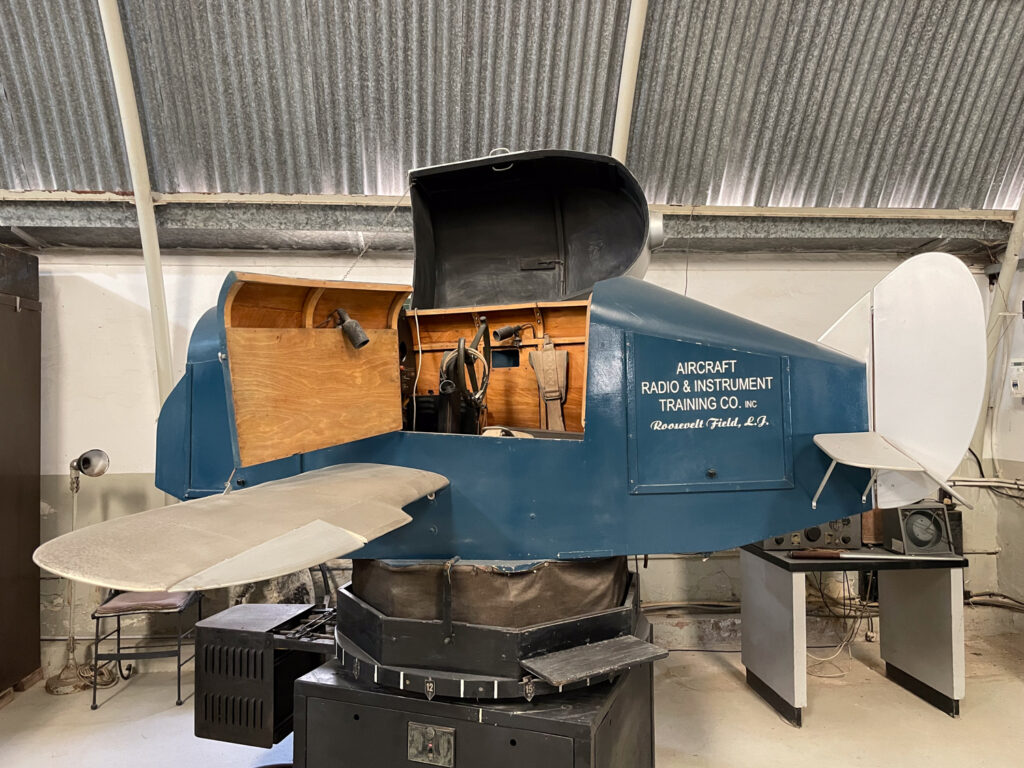
Military aircraft
The Malta Aviation Museum’s heart lies in its extraordinary collection of military aircraft. Most of them are connected to the island’s history during World War II and the post-war period.
Supermarine Spitfire
The Supermarine Spitfire is one of the most iconic aircraft of World War II. Agile, fast, and powerful, it played a key role in British air defence and was also utilised in the Battle of Malta.
The Mk IX model on display at the museum, used by the RAF’s 73rd Squadron, was equipped with an upgraded engine to compete with the new German fighters. Throughout its long career, this Spitfire flew in the UK, Gibraltar, North Africa, and Malta, from where it also participated in the invasion of Sicily.
After the war, it was converted for meteorological and search and rescue missions, only to be abandoned on the island. Saved from decay, it was thoroughly restored by the museum through painstaking work that required the recovery or reconstruction of numerous missing pieces.
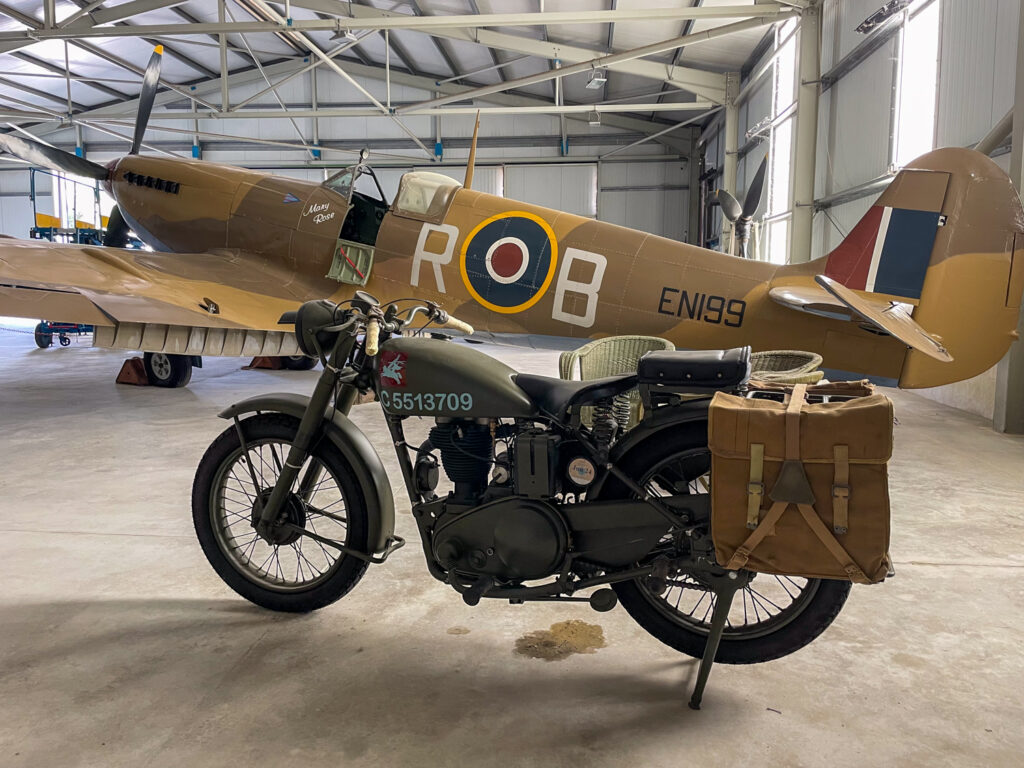
Hawker Hurricane
Less famous than the Spitfire but equally essential, the Hawker Hurricane was a robust, versatile, and well-armed aircraft. The IIA model on display in the Malta Aviation Museum was recovered at sea and restored to a condition where it could taxi, even though it was no longer able to fly.
Belonging to the RAF’s 126th Squadron, the museum’s Hurricane has a very unfortunate history. Piloted by Sergeant Thomas Hackston, it suffered engine failure shortly after departing for a night flight. Although the pilot managed to ditch and exit the aircraft unharmed, he was never found.
Hawker Sea Hawk
The Hawker Sea Hawk was a British jet fighter used by the Royal Navy in the 1950s. It was one of the first naval jets to enter service and was recognised for its reliability and ease of piloting. It participated in several international conflicts, including the Suez Crisis, where it showcased great operational effectiveness.
One of its most recognisable features is its folding wings, designed to take up less space on aircraft carriers. The example on display at the Malta Aviation Museum was actually used by the Royal Navy. Although today it’s a static model and it can no longer move or fly, it has been restored to its original appearance with the historical livery used during the Suez Crisis.
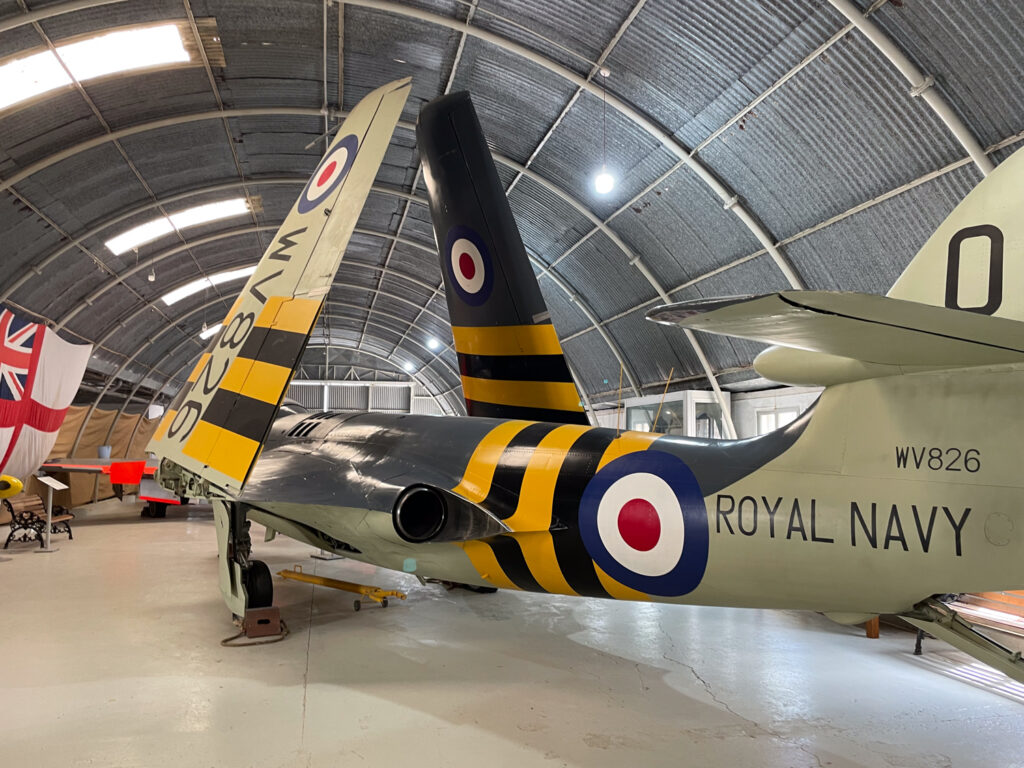
De Havilland Vampire
The de Havilland Vampire was one of the first British jets to enter service after World War II. It was used from the 1950s onwards, mainly in operations in South-East Asia and the Middle East.
The model on display at the Malta Aviation Museum is the T11 two-seater training version. You can easily recognise it by its double tail and innovative design for its time. It has an almost futuristic appearance. This aircraft, now restored by the museum as a static model, belonged to the Royal Air Force.
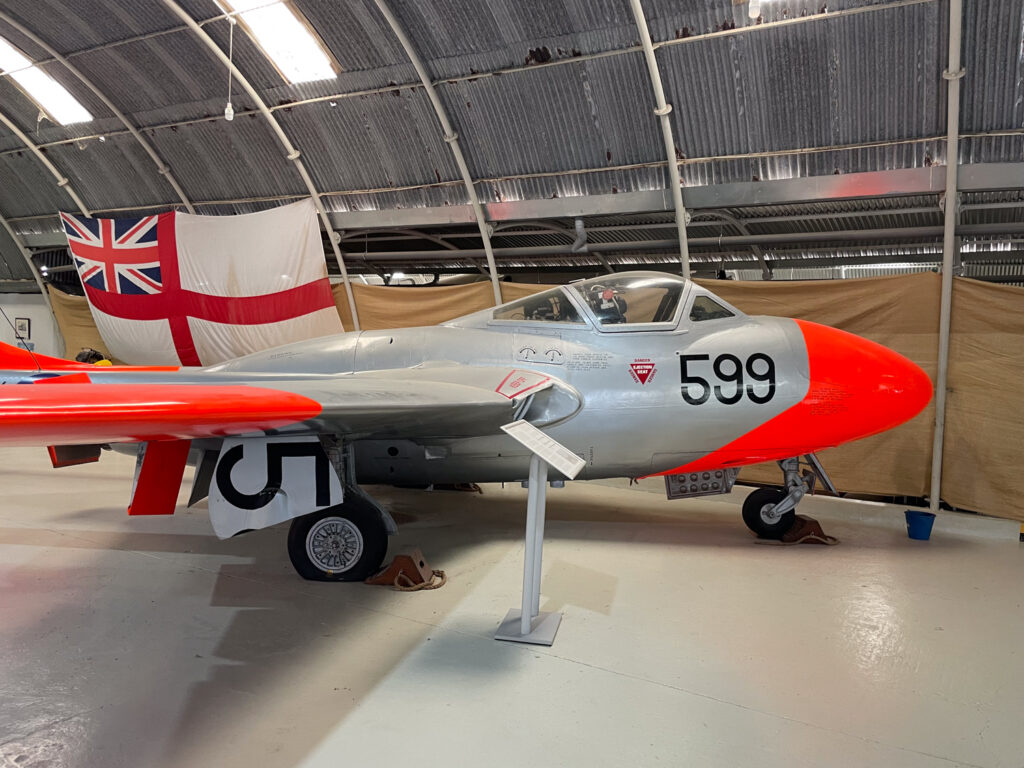
BAC Lightning
The BAC Lightning F2A is one of the most iconic British supersonic fighters of the 1960s. It was renowned for its impressive rate of climb and for being among the few British aircraft capable of exceeding Mach 2. However, it was also very complex to maintain, with a high ratio of maintenance hours to flight hours.
Designed for rapid interception, it could be equipped with rockets, bombs and reconnaissance cameras. Some Lightnings were also exported to the armed forces of Kuwait and Saudi Arabia.
Only the front section of the fuselage is on display at the Malta Aviation Museum, donated by a British enthusiast who had kept it in his garden.
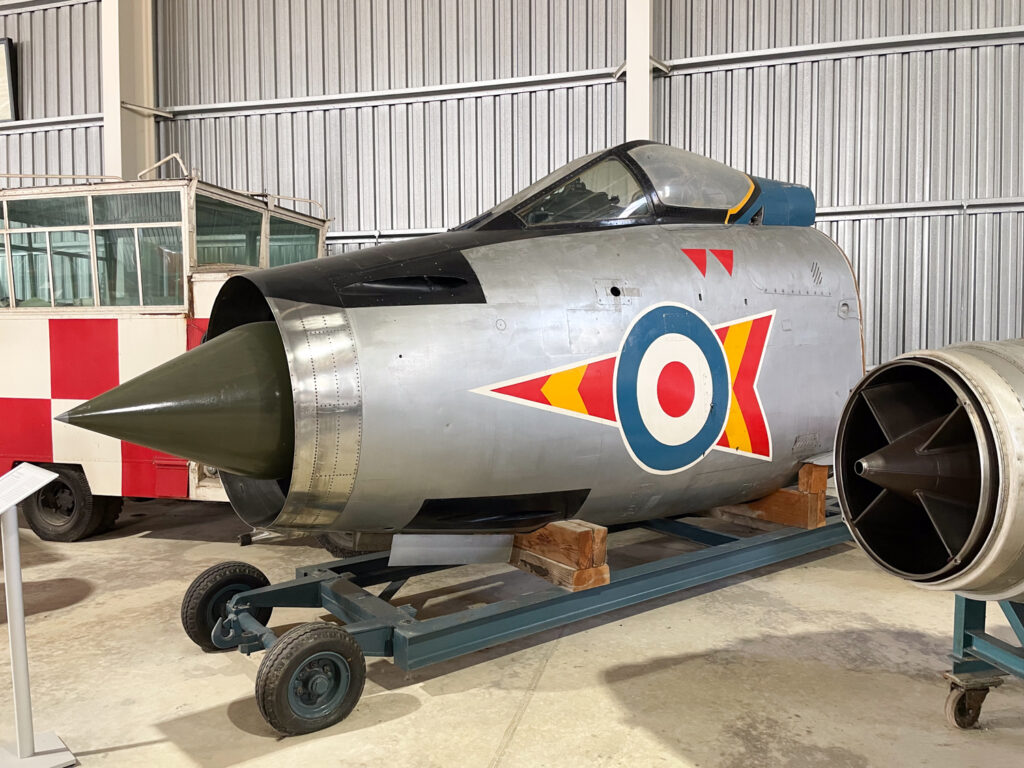
Cessna L-19 Bird Dog: the training and reconnaissance aircraft
The Cessna L-19 Bird Dog is a small, robust, and reliable high-wing aircraft primarily used for training, reconnaissance, and tactical liaison during the Korean and Vietnam wars.
The model on display at the Malta Aviation Museum originally belonged to the Italian Air Force. It was later transferred to the Maltese Armed Forces Air Wing for observation and training missions. You can see it restored in its original Italian livery.
Civil passenger aircraft
At the Malta Aviation Museum, there are not only fighter jets and military jets. You can also admire some fascinating civil aircraft, which were key players in the history of passenger transport. In the museum, you can imagine yourself as a pilot in the cockpit of the BAC One-Eleven, and I’m sure you’ll be captivated by the majesty of the Douglas C47.
Douglas C47 Dakota IV: the military transport aircraft converted to passenger transport
One aircraft that will catch your eye at the Malta Aviation Museum is the majestic Douglas C47 Dakota IV. At the beginning of the last century, it was one of the largest aircraft in the world. Even today, it remains among the most versatile ever built. Its metal profile, with two large propeller engines, is unmistakable, and you can find it in many museums and collections worldwide.
We first encountered it at the Air and Space Museum in Paris, where it starred in an exciting multimedia experience that simulated a World War II landing. The model on display in Malta, although a static specimen, is nonetheless fascinating: its history is long and adventurous.
The Dakota originated as a military transport aircraft during World War II, and was later adapted for civil use. It began flying in 1945 with the Royal Air Force in Nassau. In 1950, after being decommissioned by the RAF, it was bought by the British company Joined Eagle Aviation, then converted to passenger aircraft in Africa for Central Africa Airlines, Air Malawi, and finally for the private company Hemet Exploration.
In 1984 it returned to Europe, bought first by a German company and then by a private individual, Gilbert Villa. After his death, according to some sources, the plane was involved in undercover operations in the Balkans. What is known for sure is that in 1994 it left Bosnia and arrived in Malta, passing through various hands between France and Bosnia before ending up at auction in 1999 and finally donated to the museum.
With all the soldiers, passengers, and thousands of kilometres flown in every corner of the world, this robust and versatile aircraft has become a true flying legend!
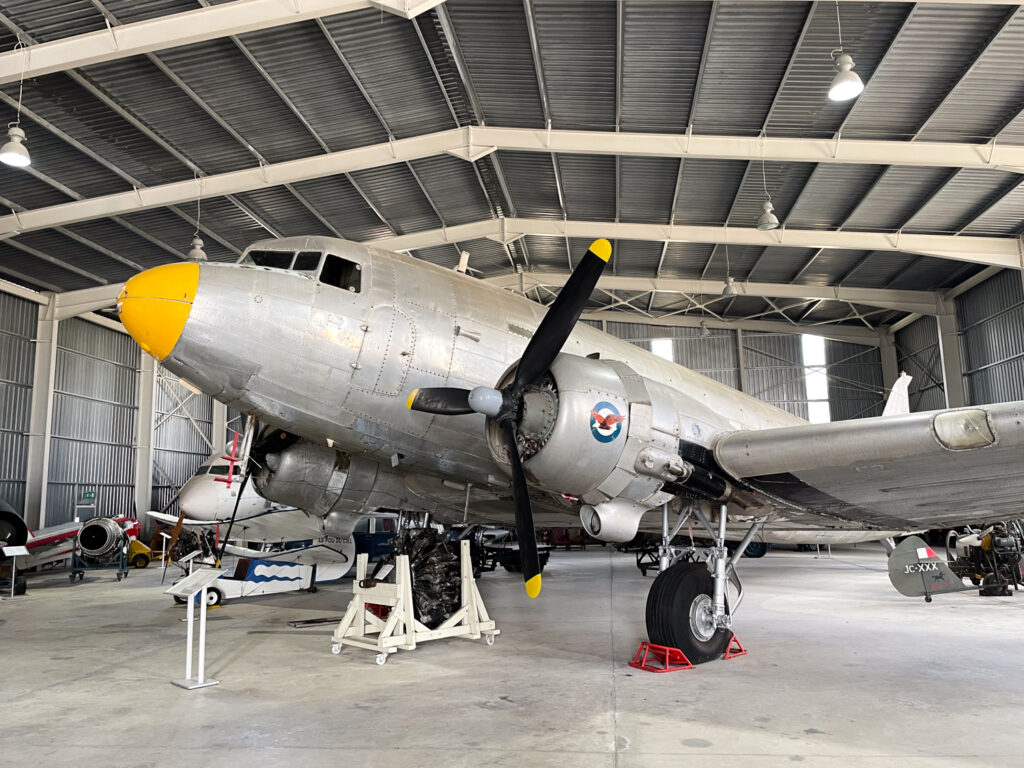
BAC One-Eleven: the historic British transport aircraft
The British Aircraft Corporation One-Eleven was a British jet designed for short-haul routes. Entering service in the 1960s, it was the second jet of its type to be operated by a commercial airline, and quickly gained international success.
In those years, the British aircraft industry was particularly competitive, and the One-Eleven managed to carve out a leading role for itself. More than half of the units produced were exported to the United States, thanks to the fact that it reached the market before its main American rival, the Douglas DC-9. In the 1980s, the model was produced under licence in Romania, under the name Rombac One-Eleven.
The BAC One-Eleven is the most successful civil aircraft ever designed in the UK. Numerous airlines used it until the 1990s, when it was phased out due to new European noise regulations.
At the Malta Aviation Museum, only the cockpit is on display, but you can go inside and experience the thrill of sitting at the controls like a real pilot. Of course, we didn’t miss the opportunity. It is always fascinating to see up close what the onboard instruments and control panel of old airliners looked like.
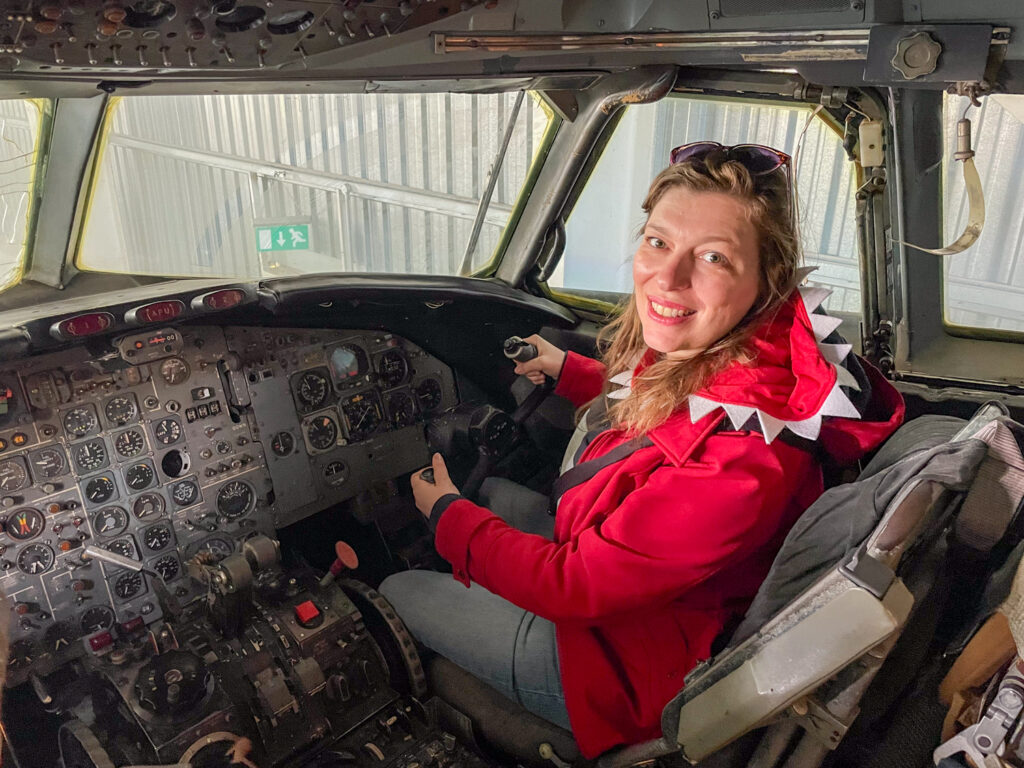
Do-it-yourself ultralight aircraft
At the Malta Aviation Museum, you can discover two truly curious and fascinating ultralight aircraft models that tell different stories but share a passion for DIY flying. An ultralight aircraft has precise weight limits that distinguish it from general aviation aircraft and can only be used for sport or recreational flights.
Ultralight aircraft regulations vary significantly from country to country. For example, in some countries, a flight licence is not even required. This has contributed to the international spread of ultralight aircraft, which can be assembled at home like models!
Le Pou du Ciel: the flea of the French sky
Literally called ‘the flea of the sky’, Le Pou du Ciel is a tiny French aircraft designed in the 1930s with a very specific aim: to allow anyone to build a plane at home. Light, inexpensive and curious to look at, it represents the dream of being able to build a plane in your garage at home on weekends.
However, looking at it up close at the Malta Aviation Museum, you don’t really want to get in it: it looks very unmanoeuvrable, yet it appears to be quite stable in flight. The design ignores classic aerodynamic lines and focuses on functionality and economy: a concept that anticipates the spirit of today’s microlights.
The fuselage is long and narrow, featuring a single seat and resembling a sidecar. The propeller is positioned directly in front of the two wings of equal size, arranged one in front of the other. Directional control is provided by a large rudder, while the pilot manoeuvres the aircraft using a simple lever.
Despite its bizarre appearance, La Pou du Ciel construction kit spread throughout France, the USSR, Germany, Italy, Scandinavia, and even the United States. Following its initial success, the aircraft was banned in France due to numerous fatal accidents, and the onset of World War II marked the definitive decline of this do-it-yourself aircraft.
The model on display in Malta is a 1996 reproduction based on the original 1935 plans: a small piece of amateur aviation history that continues to intrigue and fascinate.
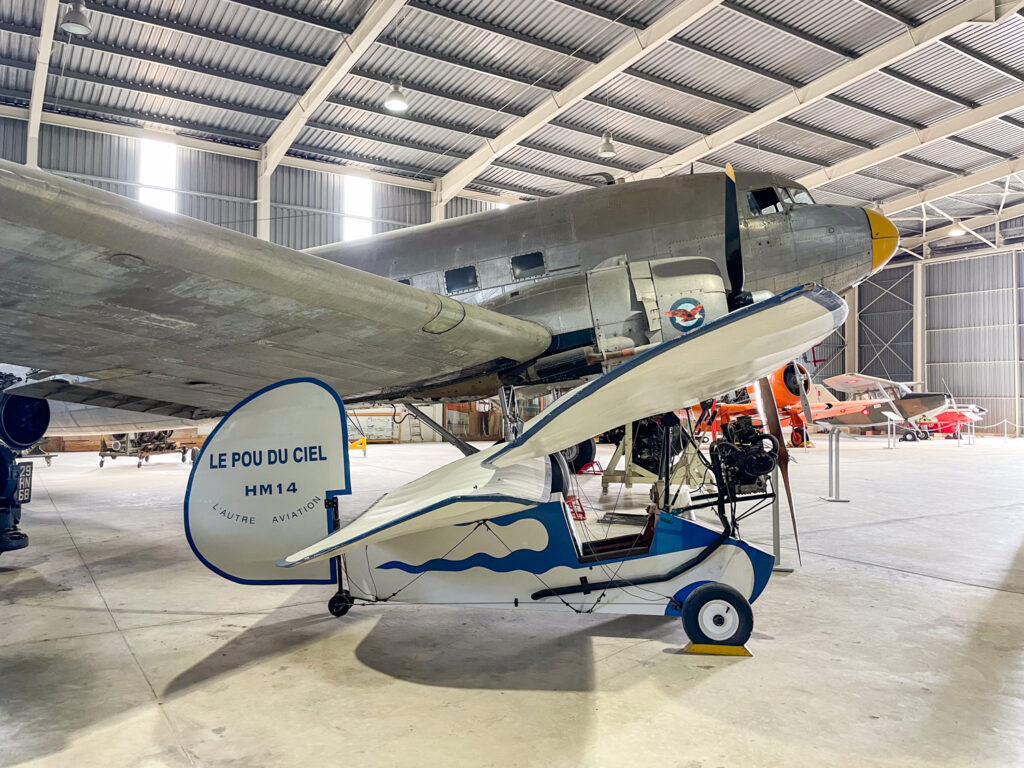
Denney Kitfox 3: the American DIY plane
While the concept of do-it-yourself aircraft sold in kit form dates back to the 1930s, it regained popularity in the 1980s as the costs of traditional aircraft began to rise sharply. In this context, Denney Aerocraft launched the Denney Kitfox 3, a modern ultralight aircraft designed for pure fun.
This modern recreational aircraft, designed to be built at home, became popular due to its ease of assembly and excellent versatility in flight. The Denney Kitfox 3 was the perfect aircraft for amateur pilots looking for an affordable, lightweight and easy-to-fly aircraft. The model you can see at the Malta Aviation Museum displayed as a static model, was originally built in Sicily and then imported to Malta in 2023.
Helicopters
At the Malta Aviation Museum, in addition to aircraft, you can also see some iconic helicopters, including two Agusta-Bells, true symbols of the history of vertical flight. The Agusta-Bell 47, in particular, is a piece that does not go unnoticed, even by those who are not aviation enthusiasts. In fact, its bubble cabin has featured in numerous films and TV series, becoming an icon in the panorama of flight and pop culture.
Agusta-Bell 212
The Agusta-Bell 212-AM is a twin-engine military helicopter utilised for a wide range of missions: troop transport, medical evacuations, tactical operations, and rescue. Reliable, spacious, and particularly versatile, it has been employed by numerous countries, including Italy, for both civil and military missions. The model on display at the Malta Aviation Museum originates from the Italian Air Force.
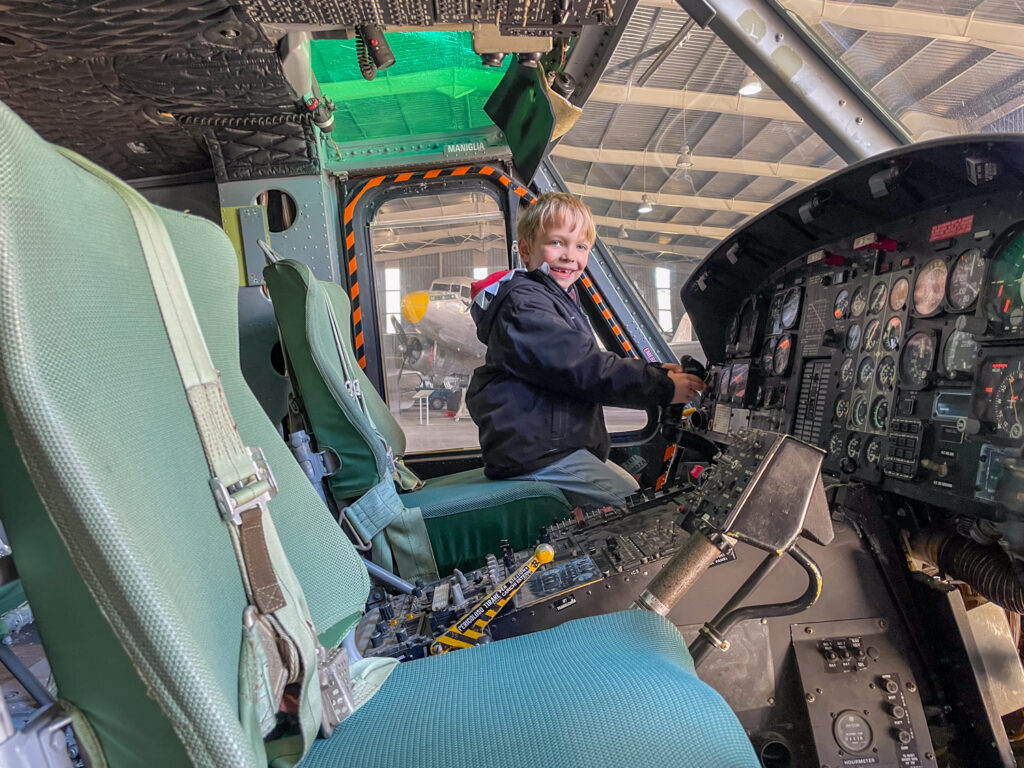
Agusta-Bell 47
The Agusta-Bell 47G-2 has left an indelible mark on pop culture, becoming one of the most recognisable helicopters in the world due to its unmistakable bubble-shaped cabin and its appearance in numerous films and TV series. The transparent cabin and aerodynamic design have made it a visual icon, easily identifiable to everyone, including non-aviation enthusiasts.
The 47G-2 is likely best known for its role in the cult TV series MAS*H, where it was utilised for rescue and medical evacuation operations in a field hospital camp during the Korean War. Besides television, the Agusta-Bell 47 helicopter has appeared in numerous war and adventure films.
The model displayed at the Malta Aviation Museum was initially owned by the German Luftwaffe, later sold to the Air Wing of the Malta Armed Forces. Today, it’s exhibited in the condition it was in when it last flew.
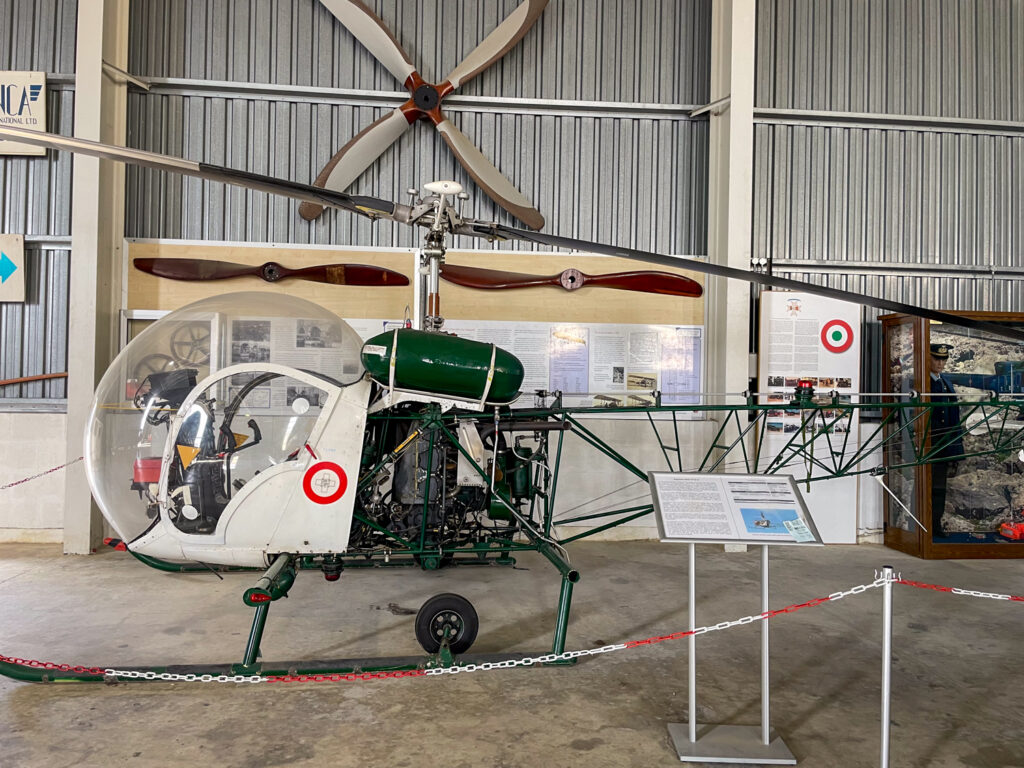
How to plan a visit to the Malta Aviation Museum
A visit to the Malta Aviation Museum takes one or two hours, depending on your level of interest. However, if you’re an aviation enthusiast, you could spend much more time there, just as we did. The explanatory panels in English provide many details, and the staff are very helpful with anecdotes and technical explanations.
Director Ray Polidano informed us that over the years, the Malta Aviation Museum has become a pilgrimage destination for former military pilots and their families, who come to see the planes they once flew and to share the fascinating stories of the aircraft on display. Throughout the years, numerous British, German, and Italian pilots have visited the museum.
In addition to the three hangars, there is a small cafeteria located in a Nissen hut, a prefabricated structure used in Malta during World War II to provide shelter for those who lost their homes during the bombing raids.
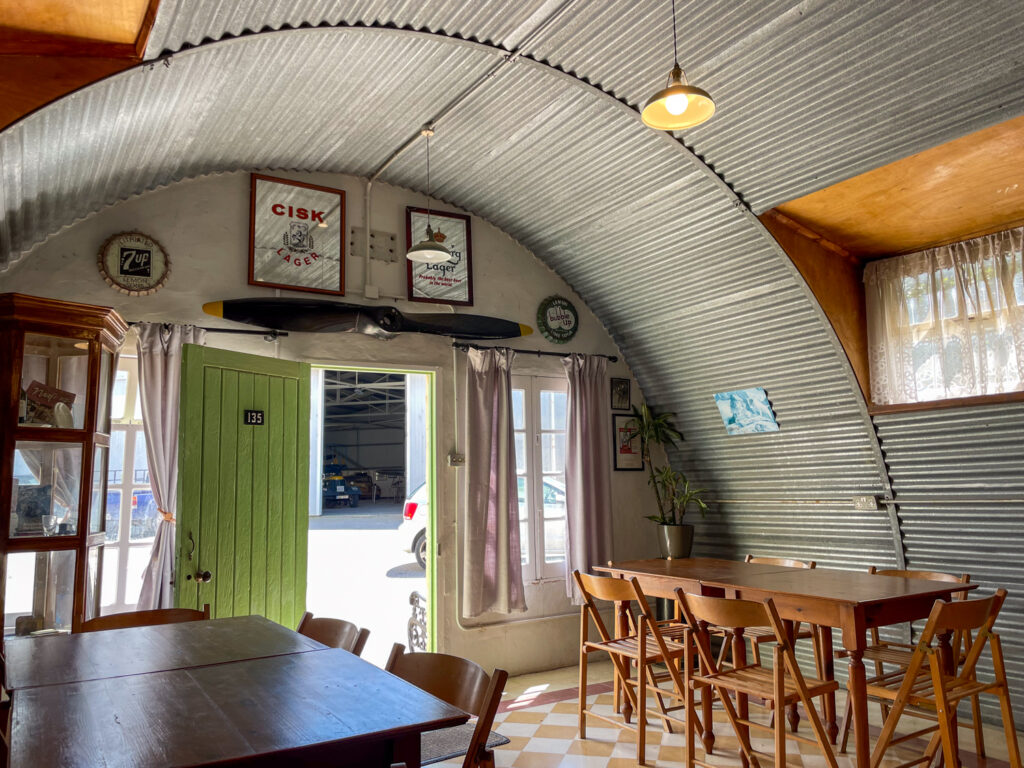
Opening Hours
The Malta Aviation Museum is open daily except Mondays. Its opening hours are from 9:00 am to 5:00 pm Tuesday through Saturday, and it has reduced hours from 9:00 am to 1:00 pm Sundays.
Admission Tickets
Tickets for the Malta Aviation Museum cost € 7.00. Children from 6 to 12 pay € 3.00, and children under 6 enter free. If you travel with other people, check if you can take advantage of family and group discounts.
You can buy tickets directly at the ticket office on the day of your visit, as reservations are not necessary. At the time of writing, it isn’t possible to buy tickets online. During the peak season, I recommend arriving in the morning to avoid any waiting time.
If you are interested in learning more about Malta’s history during World War II, don’t miss the tour of the Aviation Museum, Mosta Rotunda church and the World War II shelters. It’s onboard a typical Maltese Xarabank bus!
How to get to the Malta Aviation Museum
The Malta Aviation Museum is situated in Ta’ Qali, Attard, on a former British Air Force base. Today, the area has been transformed into sports facilities. The museum is behind the Malta National Stadium, facing the Basketball Pavilion.
If you decide to travel by public transport, there are buses departing from Valletta, Mdina and other central areas of the island. However, bear in mind that bus connections are not always frequent. I suggest you check timetables in advance with Google Maps or, better still, rent a car as we did. To search for rental cars and compare prices I recommend DiscoverCars, but you can also check prices on RentalCars.
By car, the Malta Aviation Museum is only 20 minutes from Valletta. There is free parking available both inside the museum and on the street. For the best route, I recommend using Google Maps, which works very well in Malta.
Malta Aviation Museum
Ta’ Qali, Attard, ATD 4000 Malta
Where to stay in Malta
The best areas to stay in Malta are St. Julian’s, St. Paul’s Bay, and Valletta. St. Julian’s is well-known for its vibrant nightlife, making it an ideal spot for those looking to enjoy evening entertainment. A great place to stay in St. Julian’s is the stunning Mercure St. Julian’s Malta.
Valletta, the walled fortress city and capital of Malta, is filled with beautiful churches, museums, and palaces. I recommend Valletta for a romantic city break, and the luxurious AX The Saint John is the best hotel for an unforgettable stay.
St. Paul’s Bay is perfect for family trips, as it offers a calmer atmosphere compared to St. Julian’s and Valletta, along with several great playgrounds for children. For accommodation, you can choose the Best Western Premier Malta.
The Malta Aviation Museum is a little-known destination for tourists that in my opinion deserves to be discovered. Obviously it’s the perfect museum for aviation enthusiasts, but it’s also a great place to spend an alternative morning, away from the beaches and tourist hustle and bustle, to discover the island’s history from a unique perspective. Share in the comments if you already knew about the Malta Aviation Museum or if you decided to visit it after reading this article!
